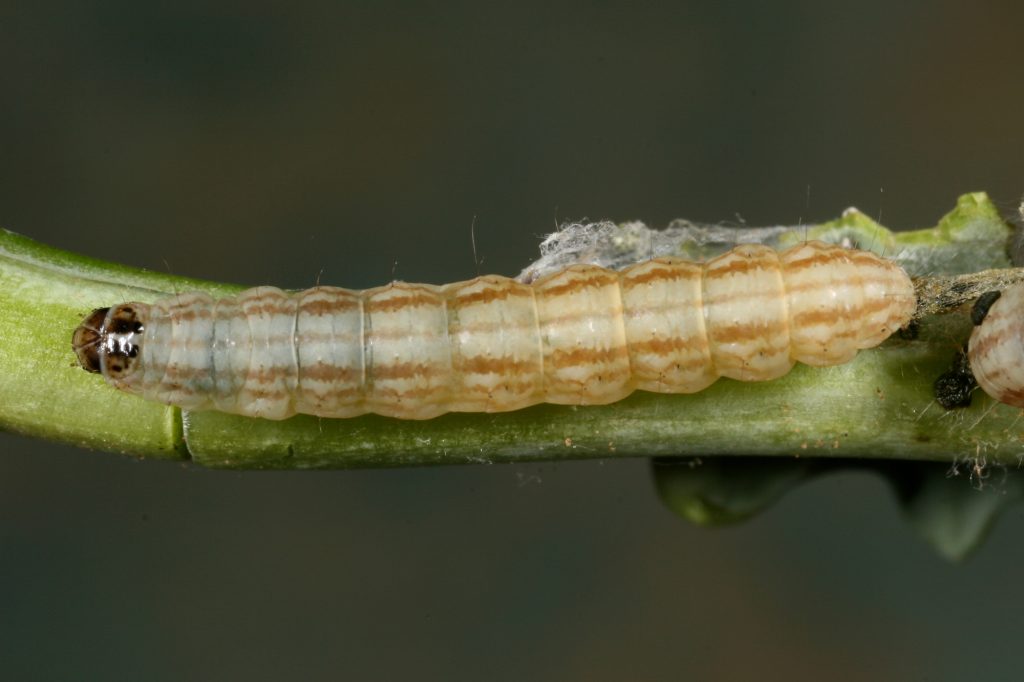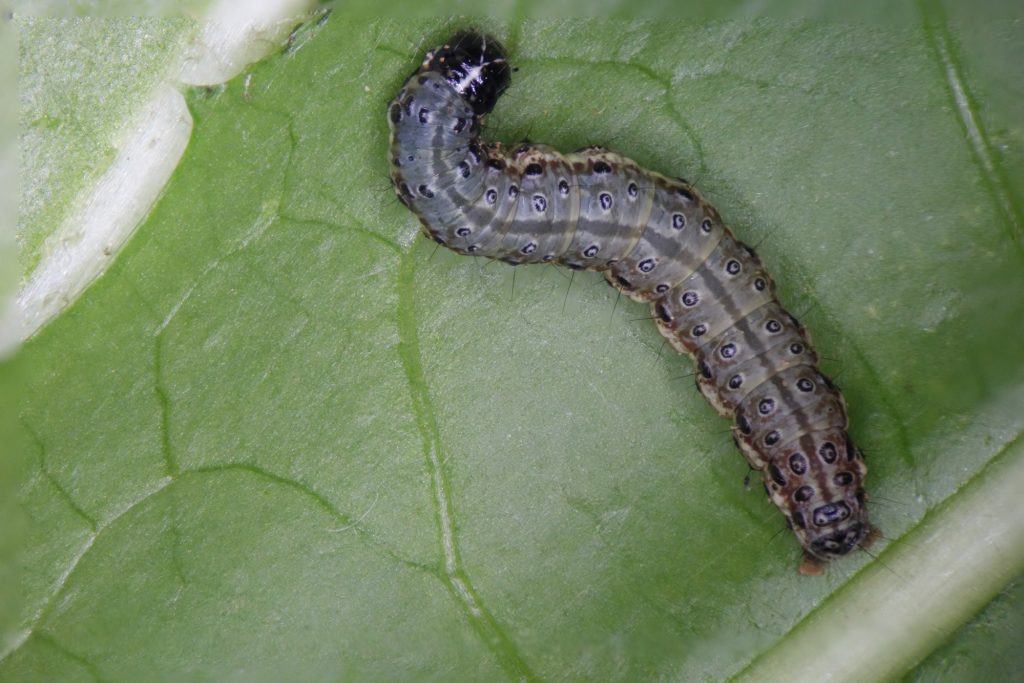Here at PestFacts south-eastern we have received a few reports on both cabbage centre grub and weed web moth in the last few weeks. This means we may see similar numbers in autumn and winter as we did last year. Here are some details on what to expect in 2021 and how to identify both pests.
What we saw last year
The cabbage centre grub is most commonly found in late spring and summer, but in 2020 we received a higher than average number of reports in March/April and a few later in winter. The crop with the greatest number of reports was canola.
Reports were similar for weed web moth (also typically more common in the summer months) with many reports in early Autumn in southern NSW and a few in early winter near Mildura. Last year weed web moth was most commonly found on lucerne, weeds and canola.
Reports this year so far
The reports we’ve had so far have been of weed web moth on lucerne near Finley and cabbage centre grub on forage canola near Elmore and on brassica forage near St Arnaud (see PestFacts map for more details). This means this species may be a minor problem for early season sowing and growing of young canola and forage brassicas (see management notes below).
Identification of cabbage centre grub
In Australia, the cabbage centre grub refers to two species, Hellula hydralis; a native species distributed throughout Australia, and Hellula undalis, an introduced species found in northern and eastern Australian states, but not south of central New South Wales.
It is not easy to distinguish the two, but the larval feeding habits and management recommendations are the same for both species.

Cabbage centre grub larvae grow to about 15mm and are cream in colour with a dark head and longitudinal red-brown stripes running along their body. They have chewing mouthparts and tend to feed around the growing points of cruciferous plants, often producing webs which can bind leaves together.
Identification of weed web moth
Weed web moth, Achyra affinitalis, are thin and hairy, and vary in colour between grey-green, dark-green or pale brown. They have a black head and older larvae have a dark stripe down the middle of their back with rows of small dark spots on each side.

Similar to the cabbage centre grub, the weed web moth larvae are small (around 15-20mm) and spin webs on plants, which are often noticed before the larvae themselves.
Weed web moth larvae wriggle violently when disturbed and can be very active. In vegetative crops the larvae shred foliage creating a skeletonised appearance. Feeding can be severe enough that leaves are defoliated and the plant dies.
Management
Both cabbage centre grub and weed web moth are minor early establishment pests that rarely reach high enough numbers to cause economic damage. However, weed web moth can be problematic in warmer than average years with early autumn rainfall, as was the case in 2020.
Both species generally decrease in numbers in winter, but numbers in the cooler months were higher than expected last year, so ongoing monitoring is encouraged.
It is important to note that the webbing produced by both pests can give them some protection from chemical sprays. There are likely to be useful natural enemies for these species in crops (although more research is needed), so for this reason, we encourage spot or border spraying to help preserve beneficial species.
There also isn’t much to be concerned about when these pests are spotted on forage brassicas, as it is thought that grazing and dual-purpose cropping will help with the management of these grubs.
Acknowledgements
Thanks to the following people for providing field observations: Stacey Doolan (Elders) and Greg Toomey (Nutrigen Ag). Thanks also to Leo McGrane and Dr Jessica Lye for assisting with the development of this article.
Cover image: Photo by Greg Parker





